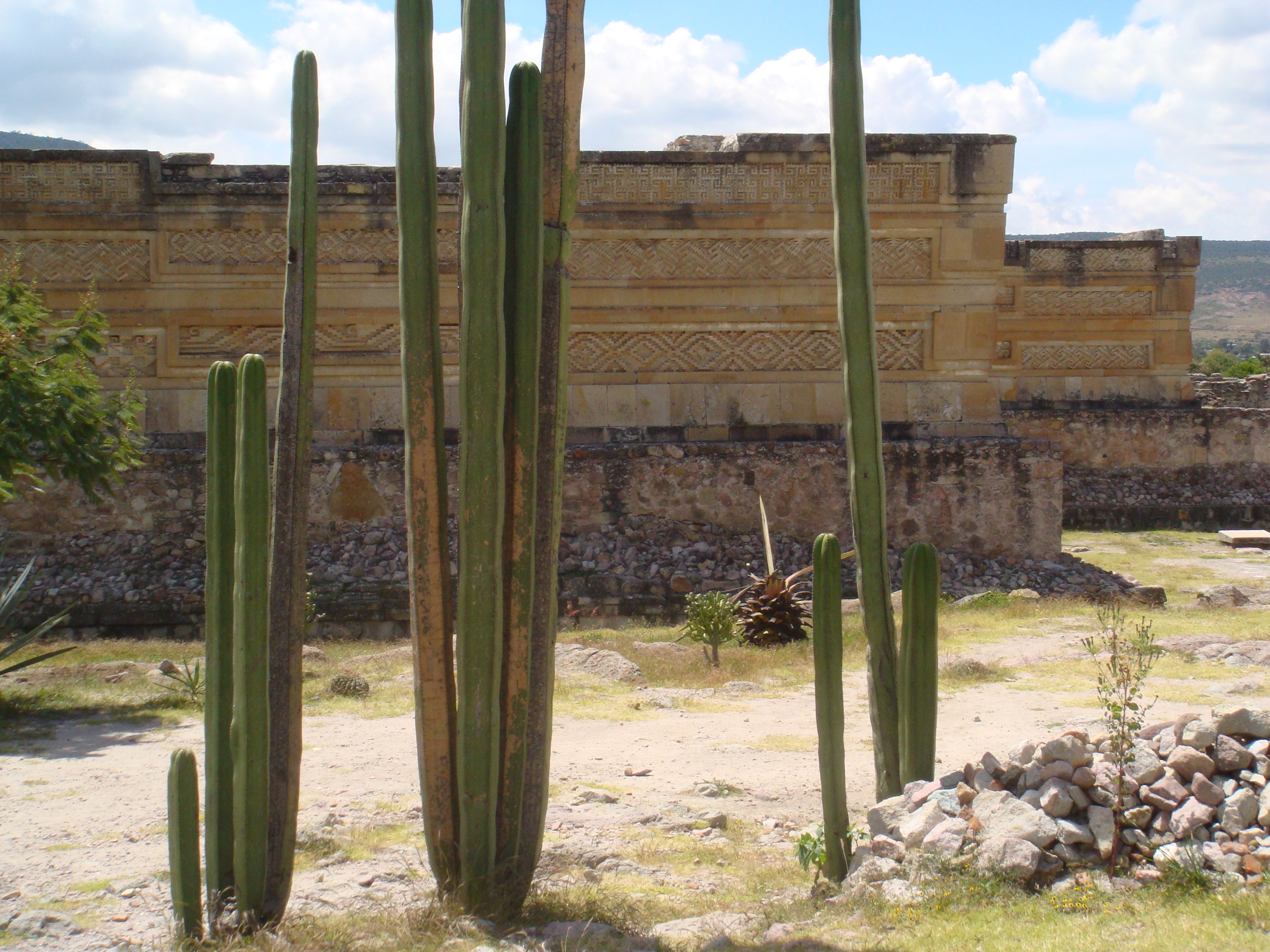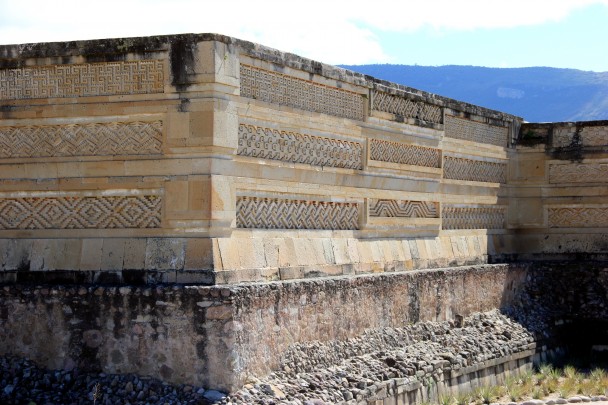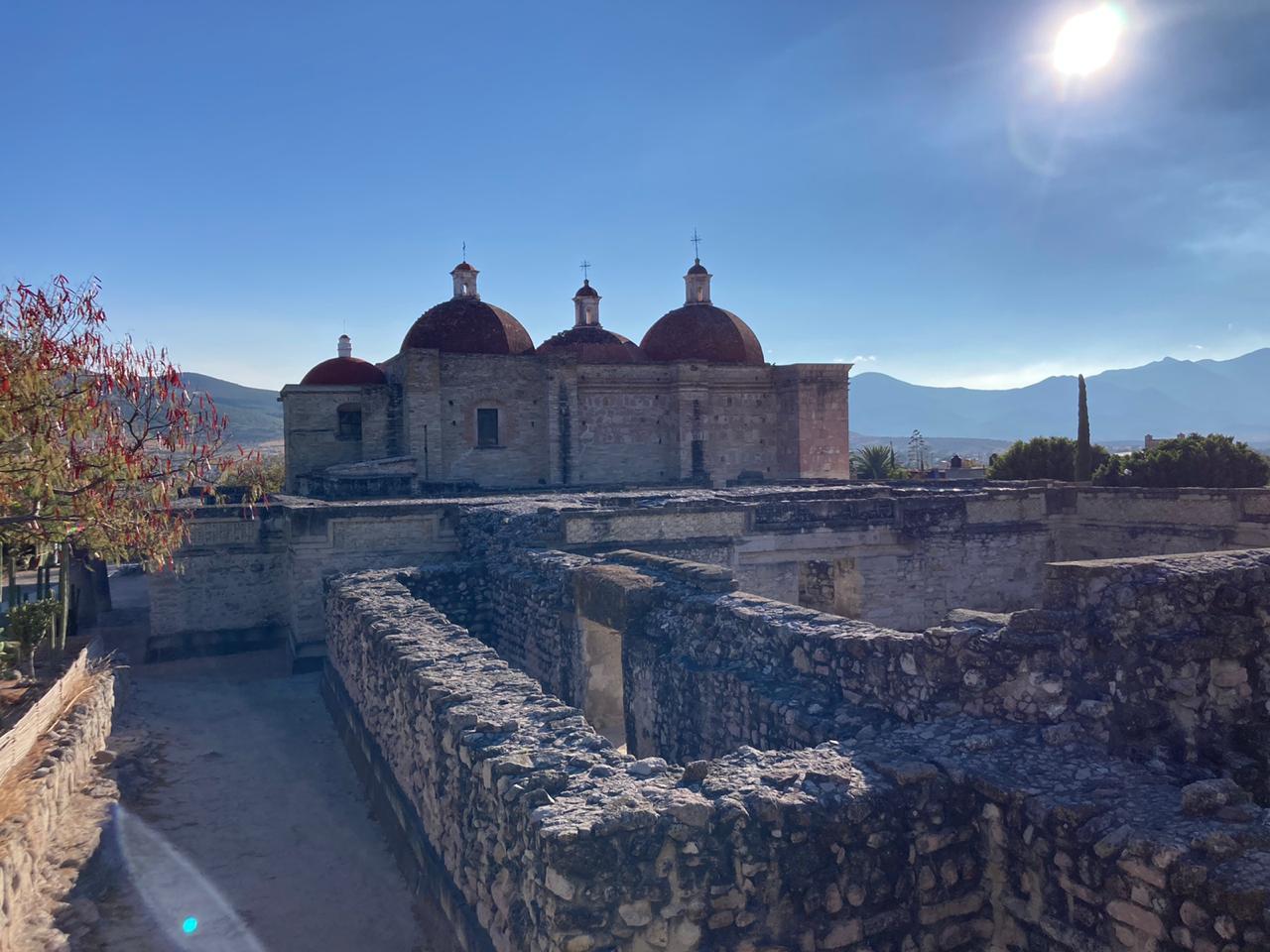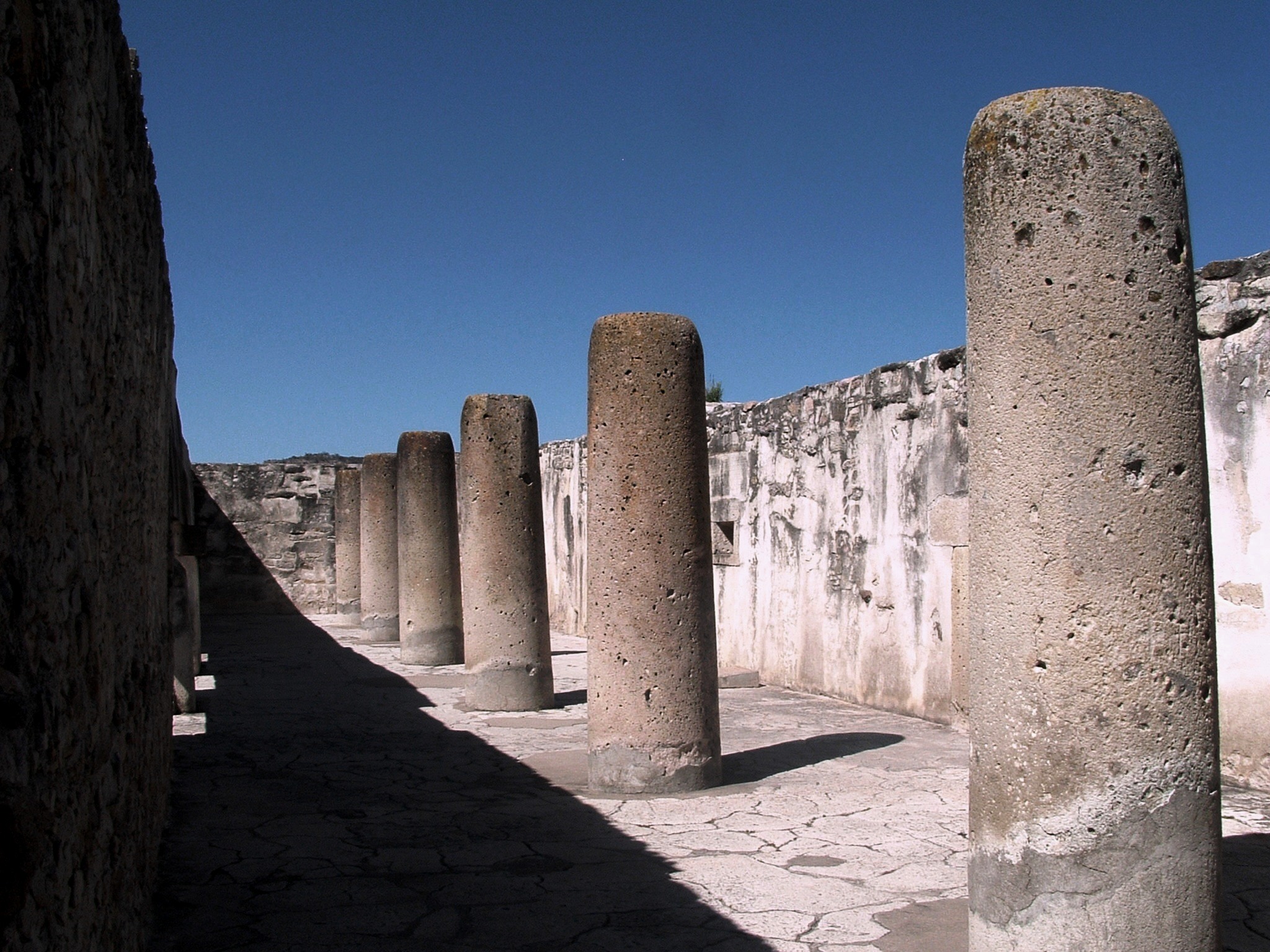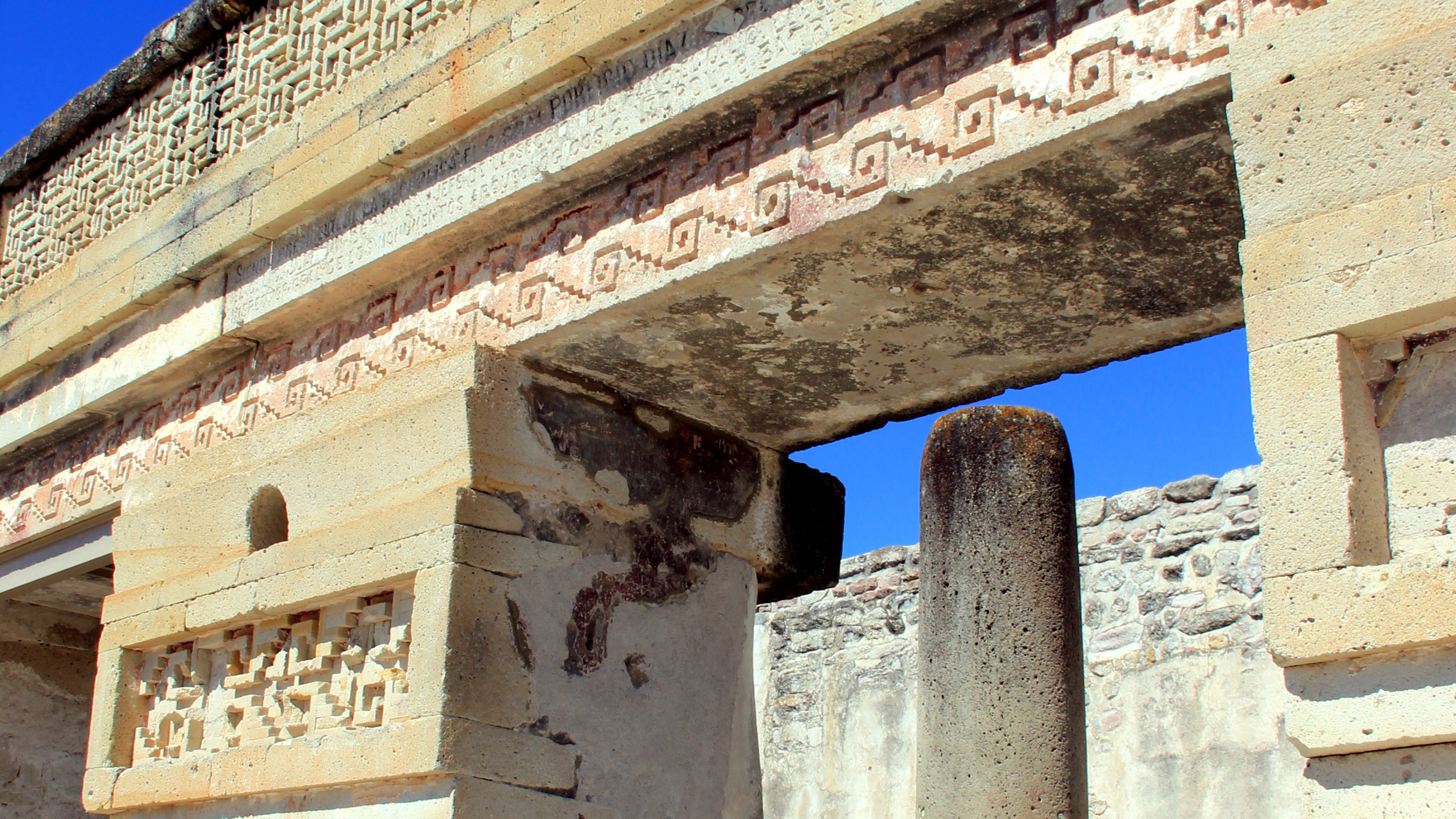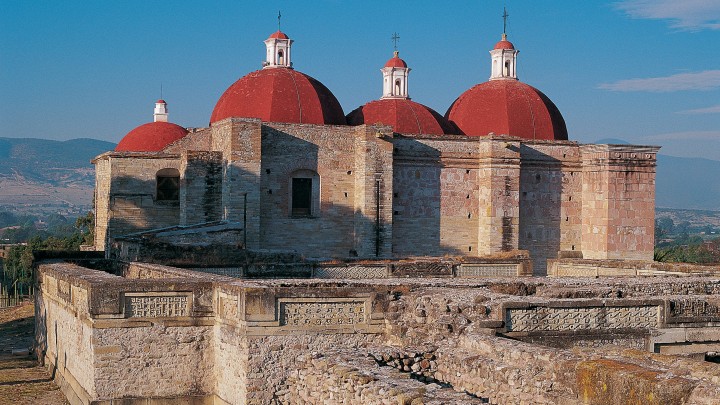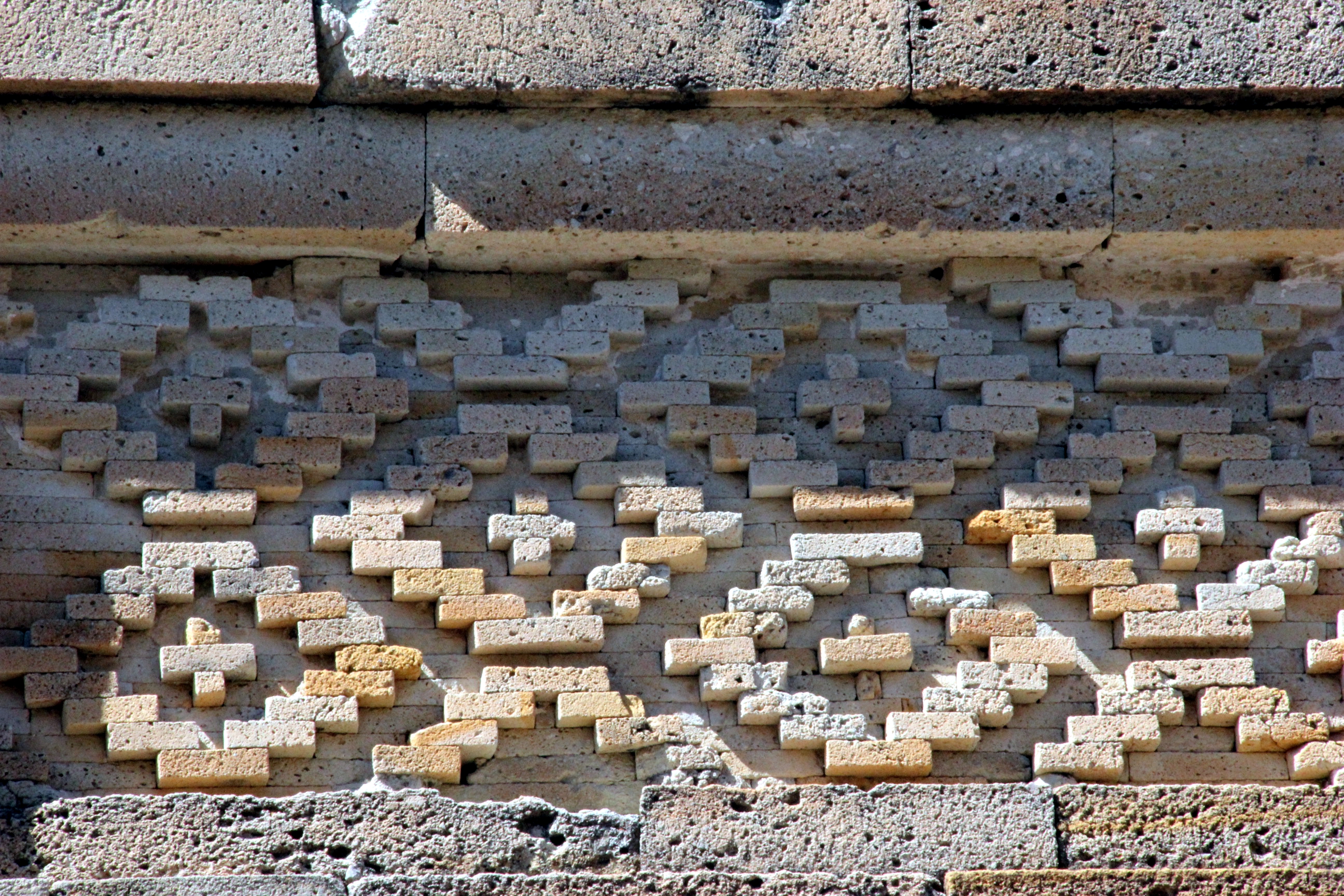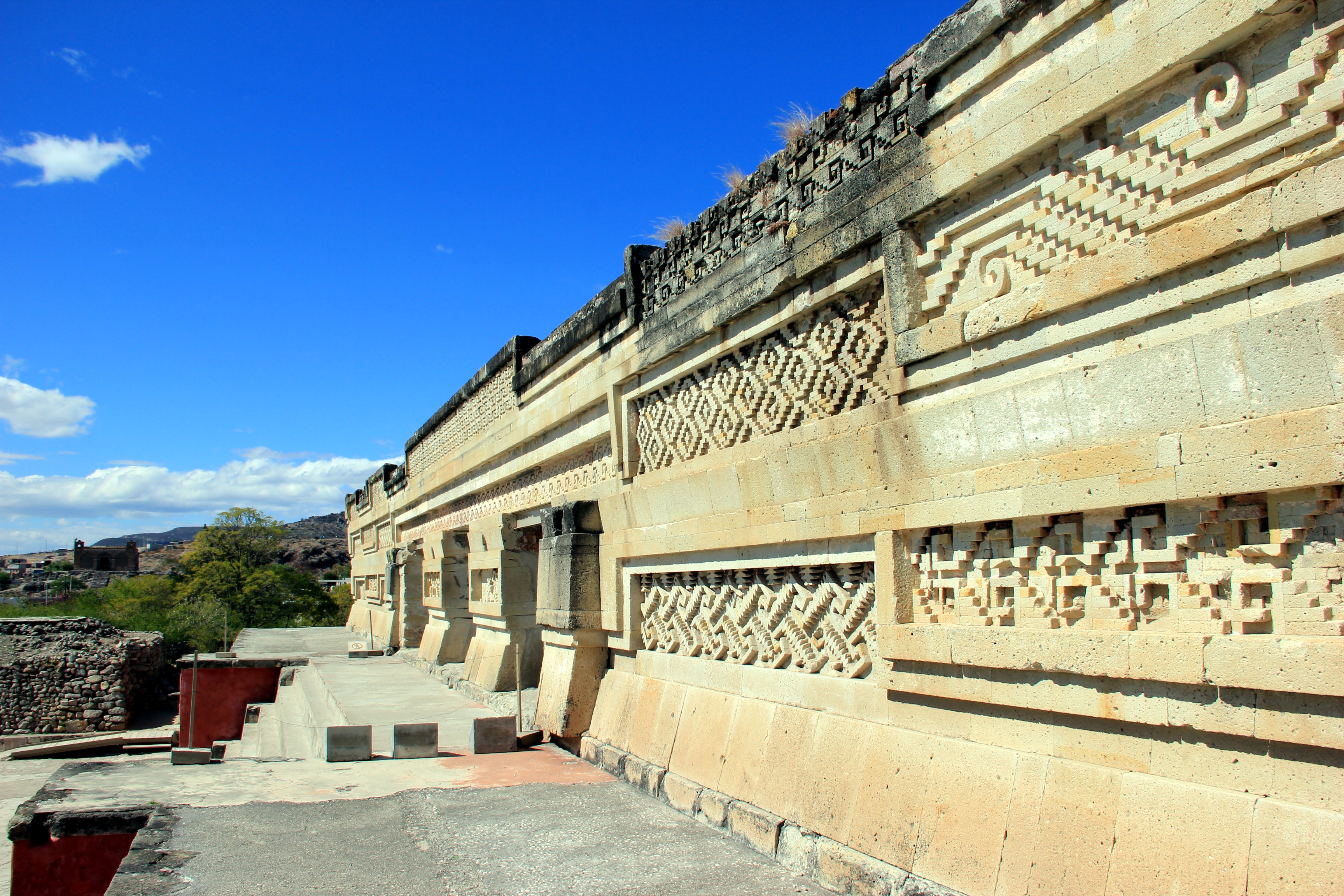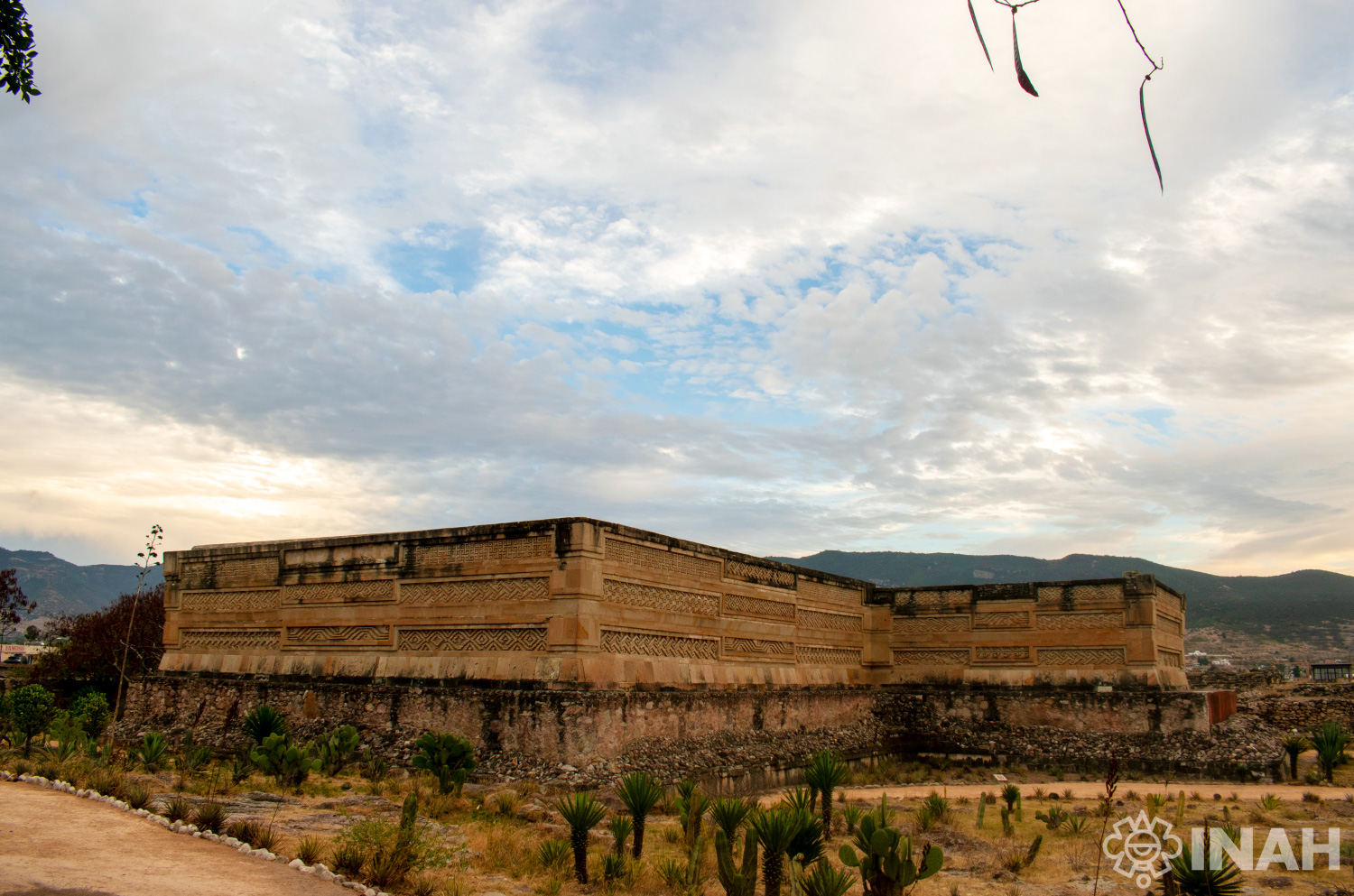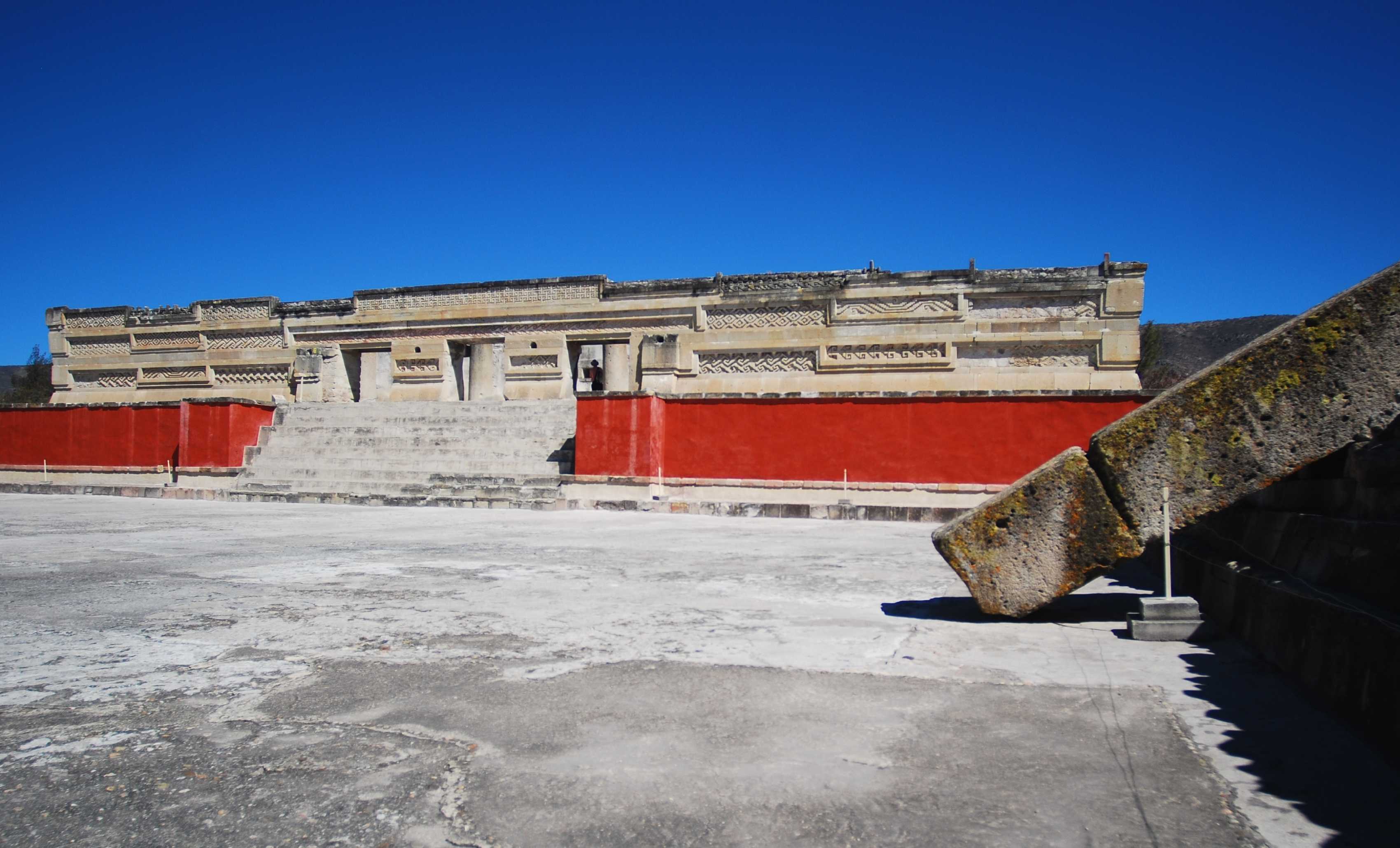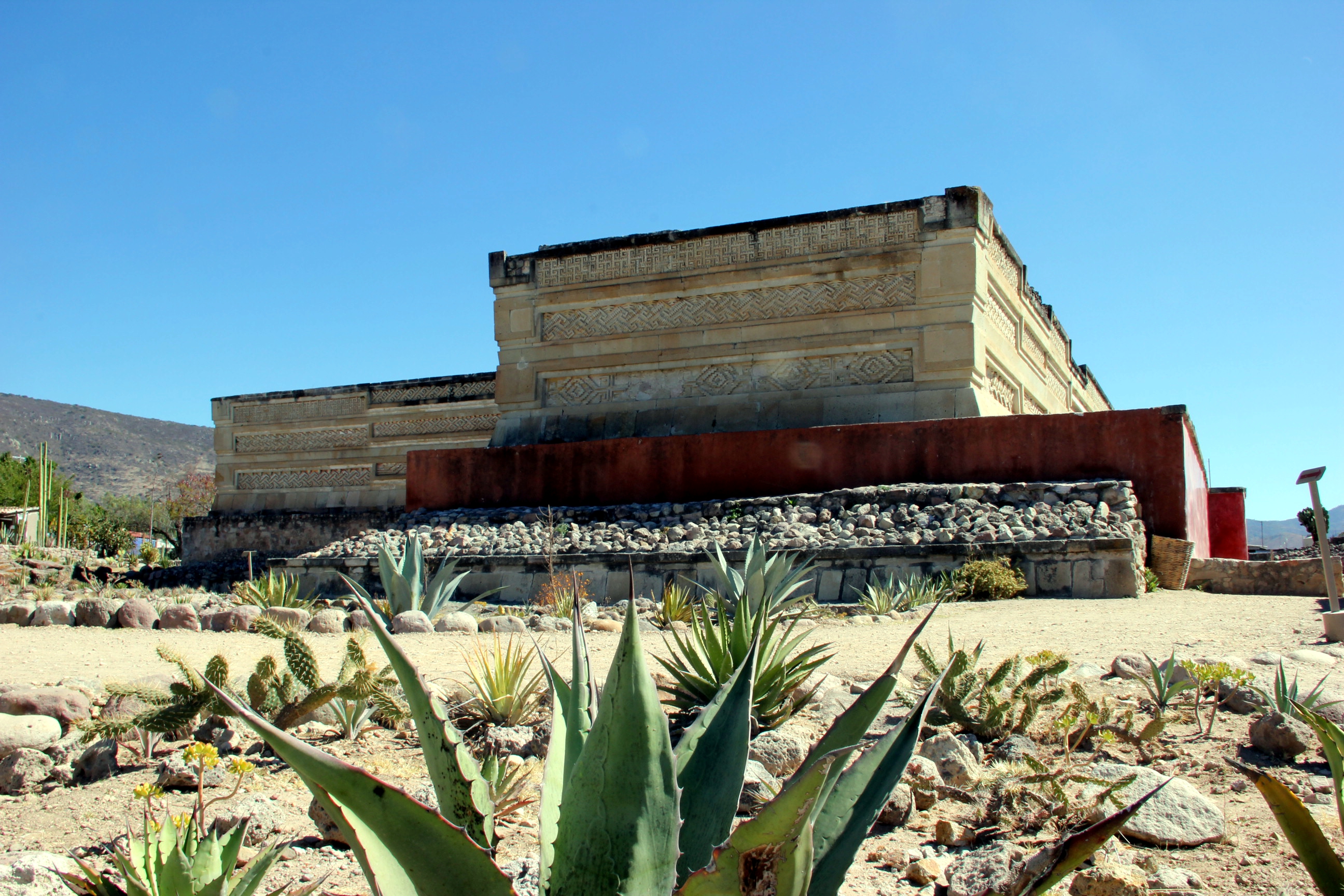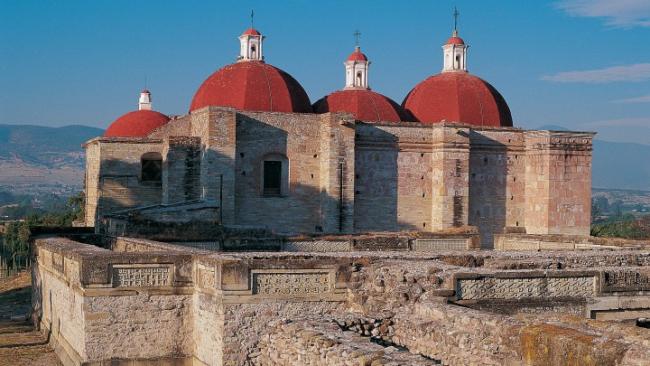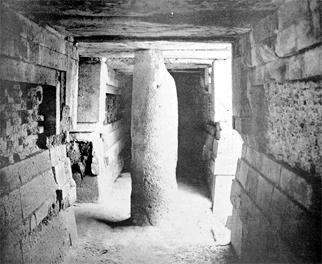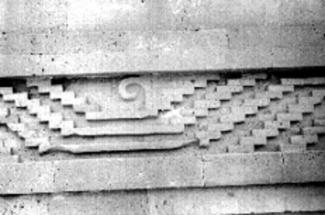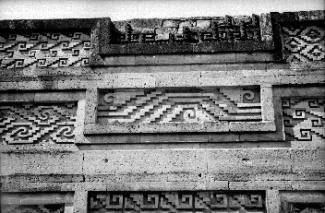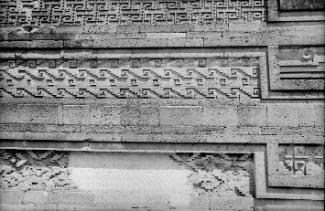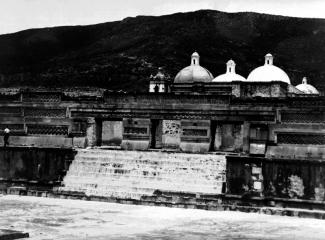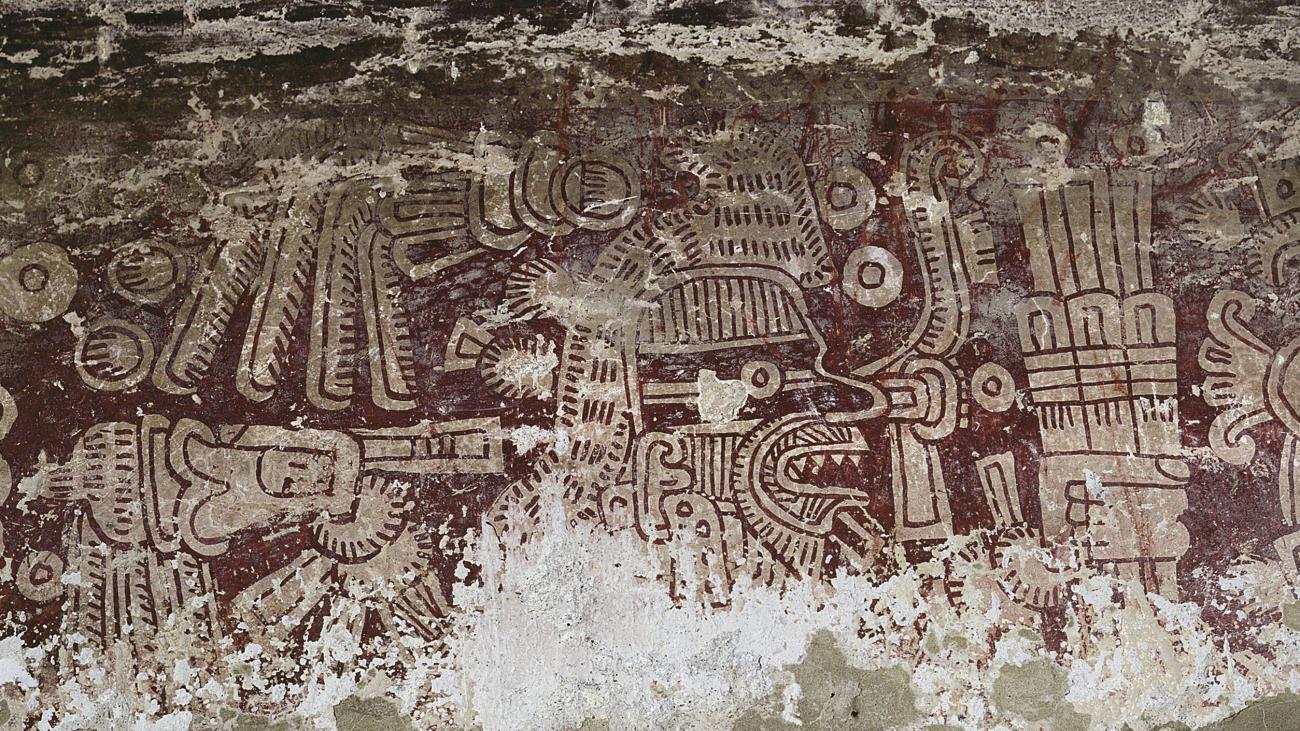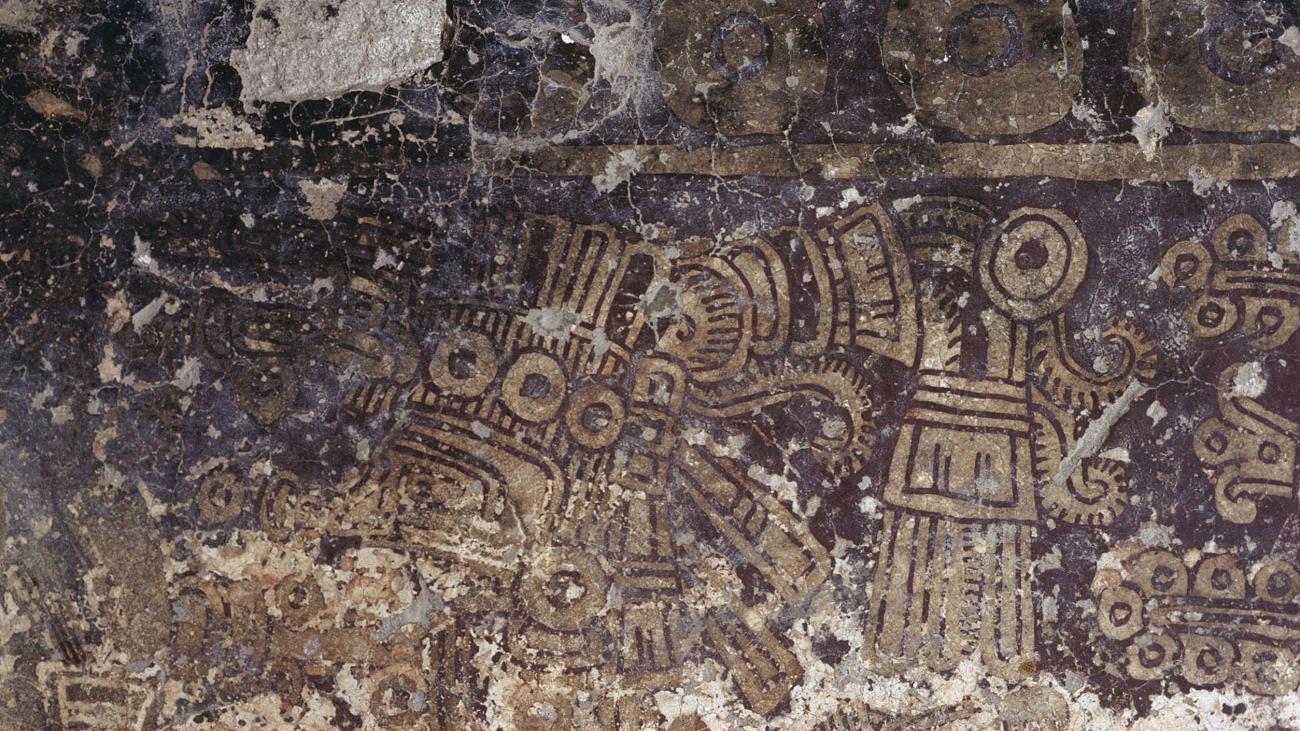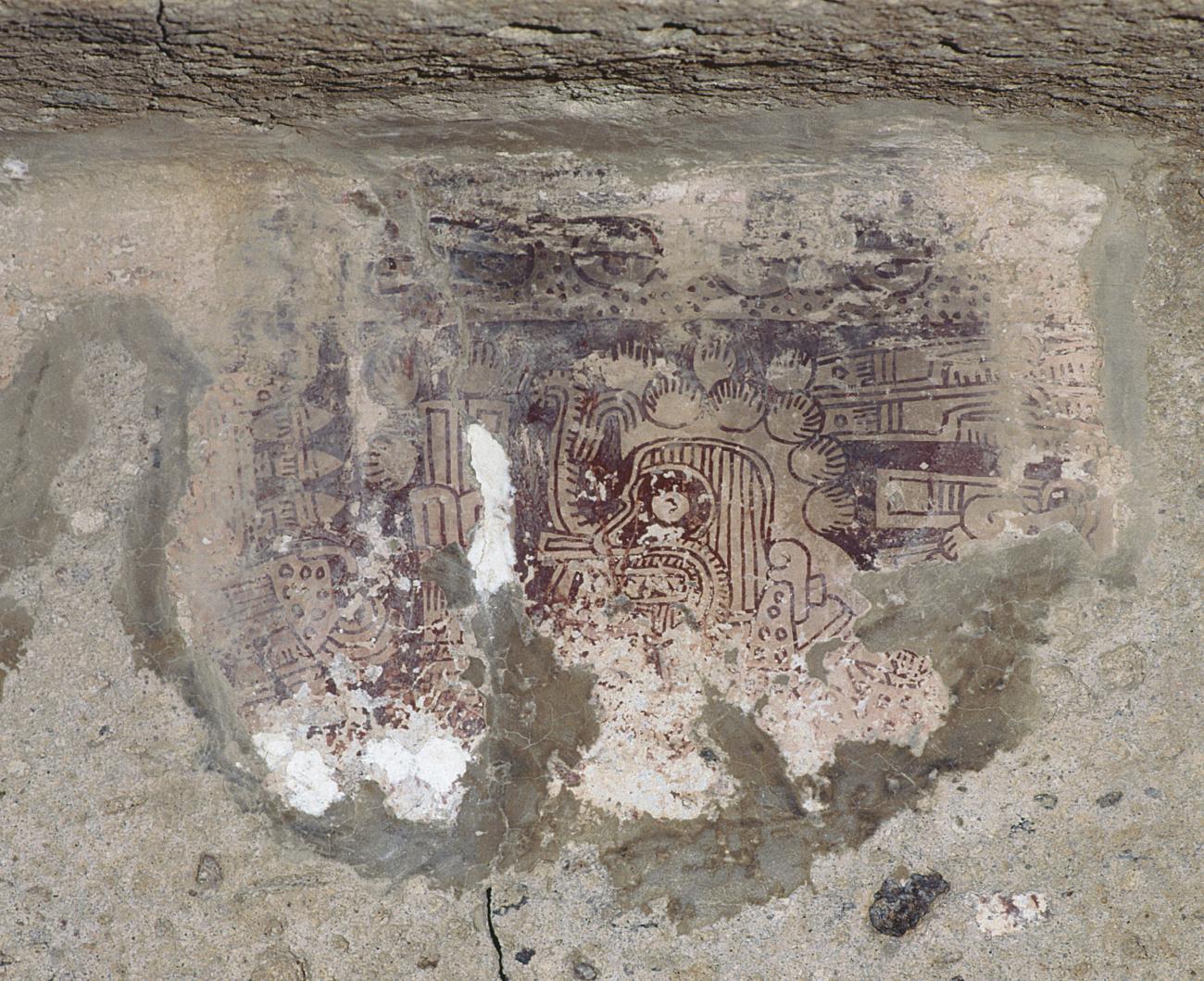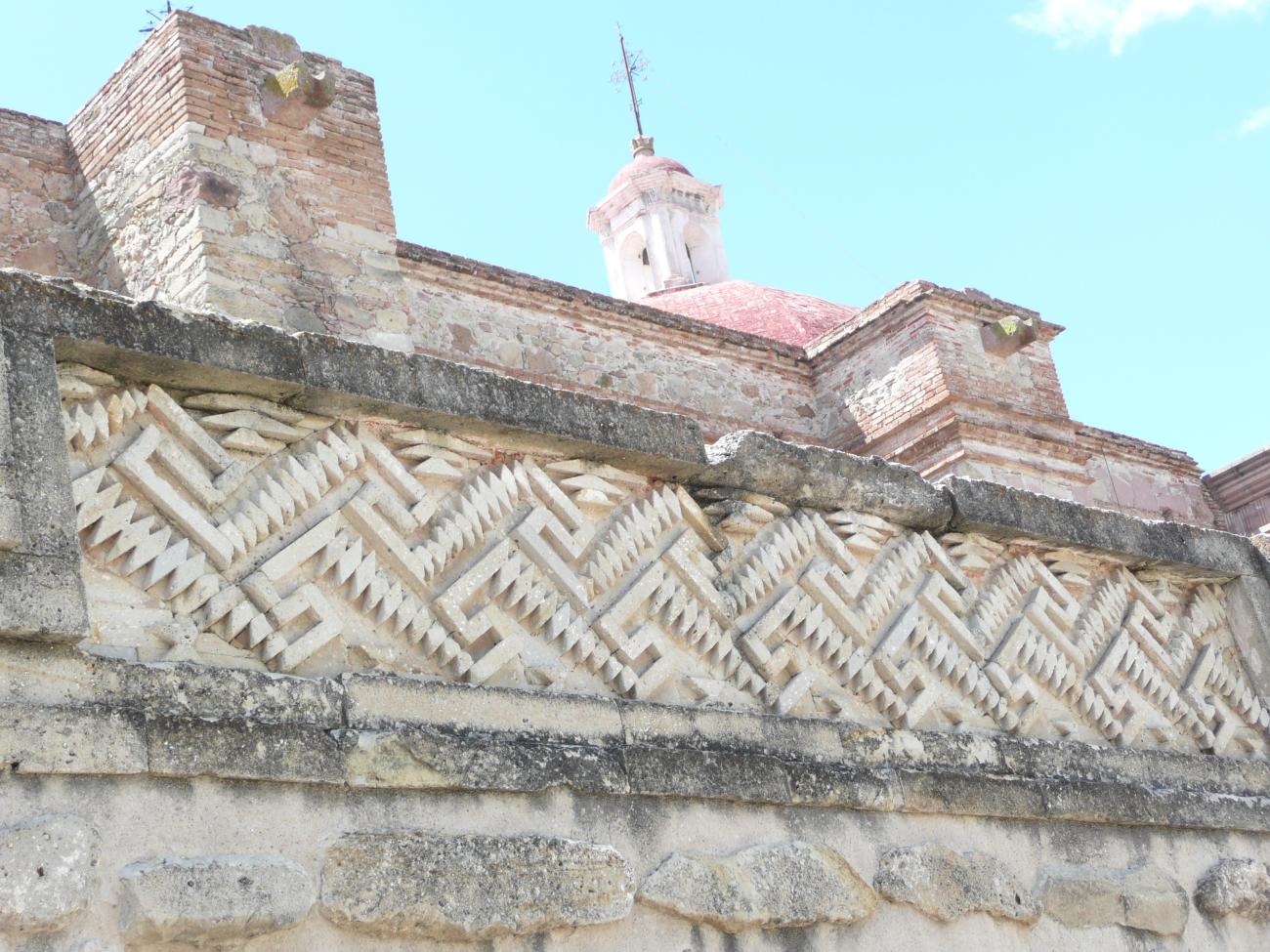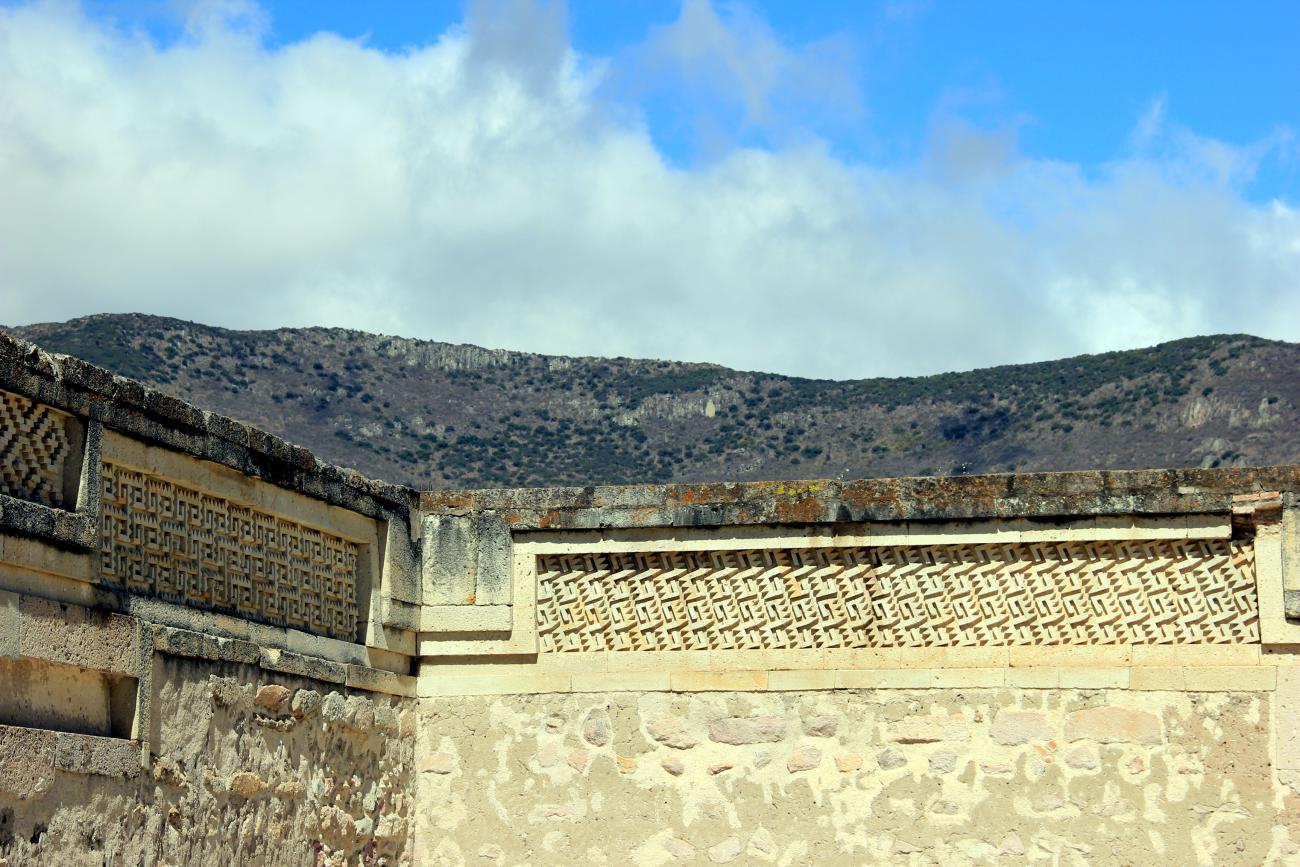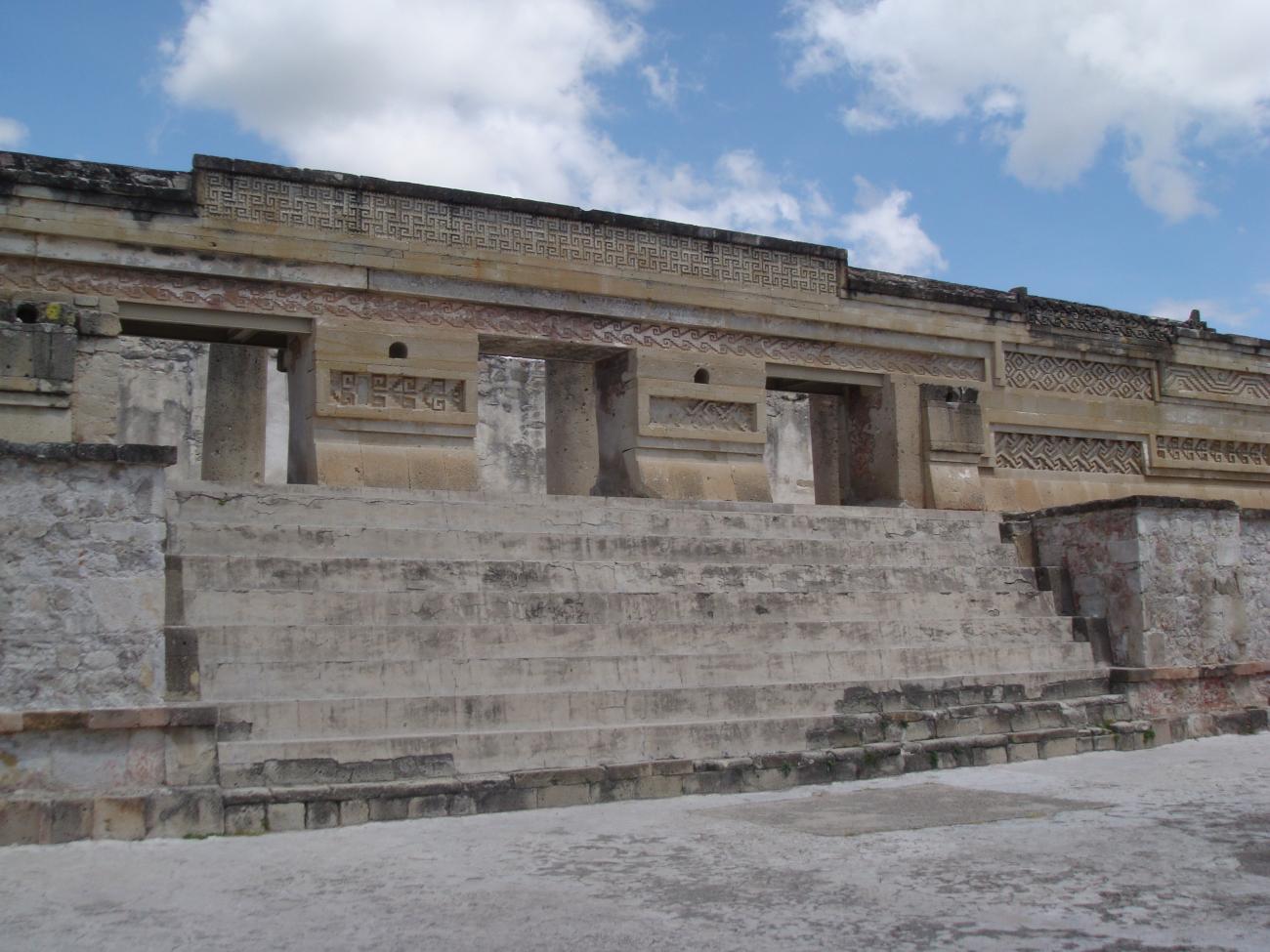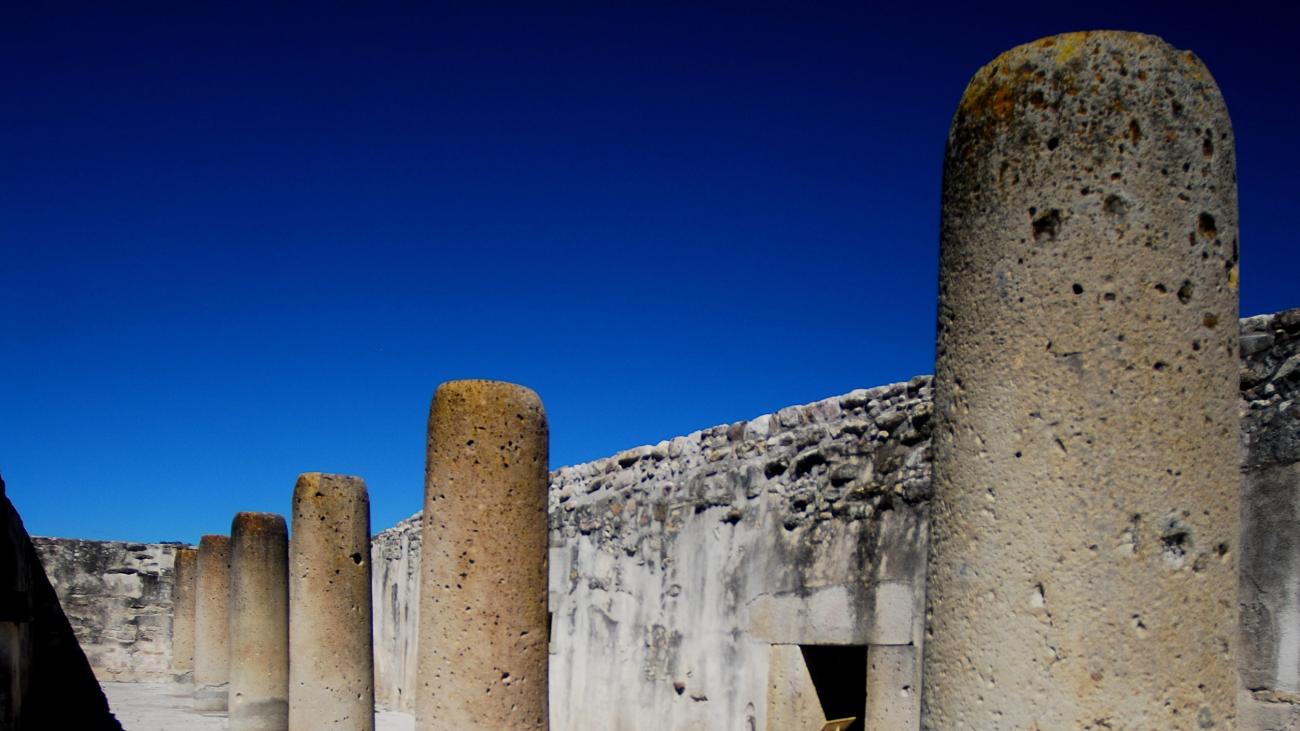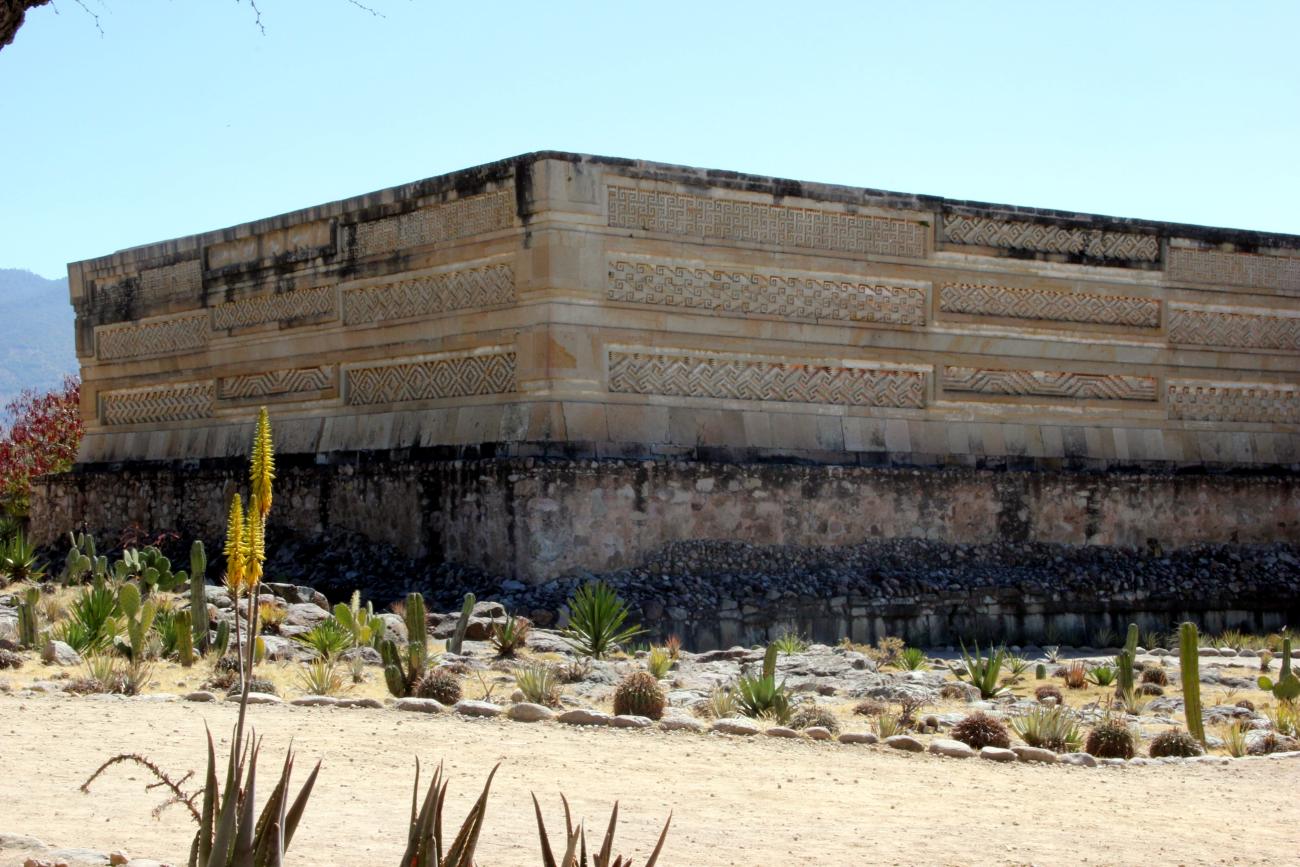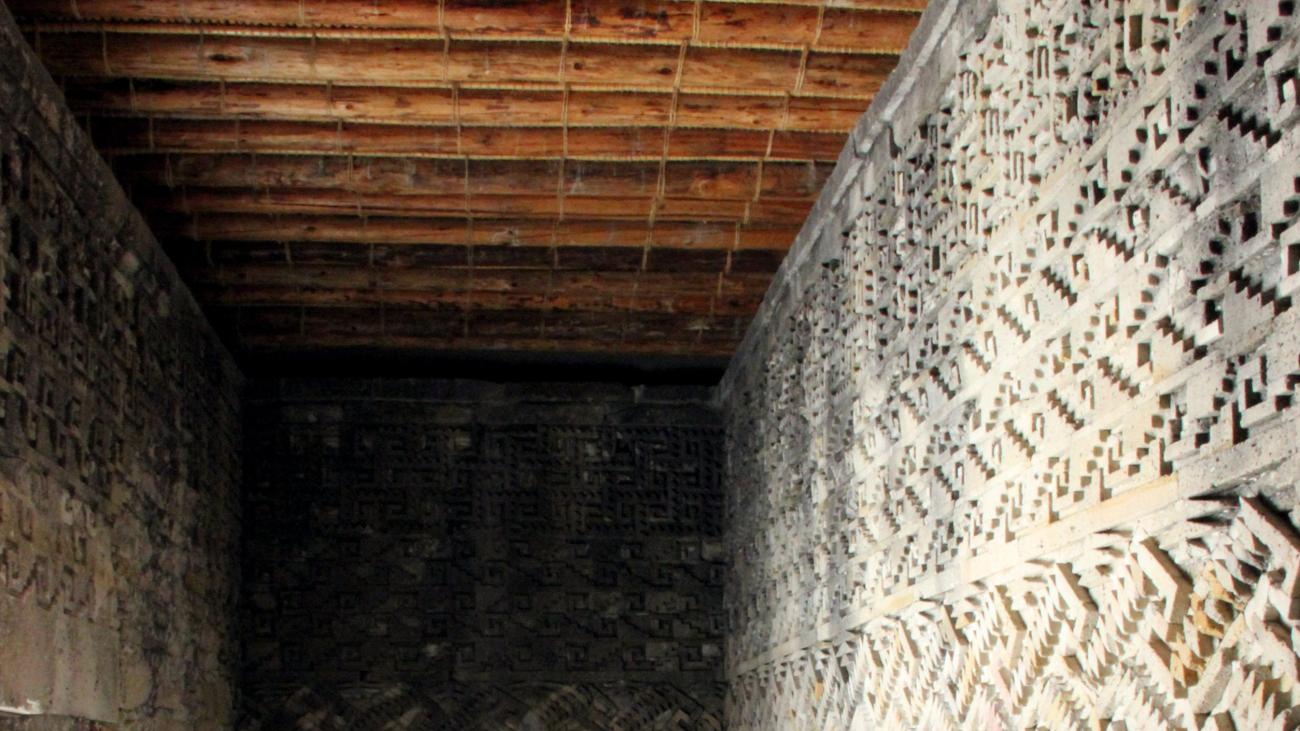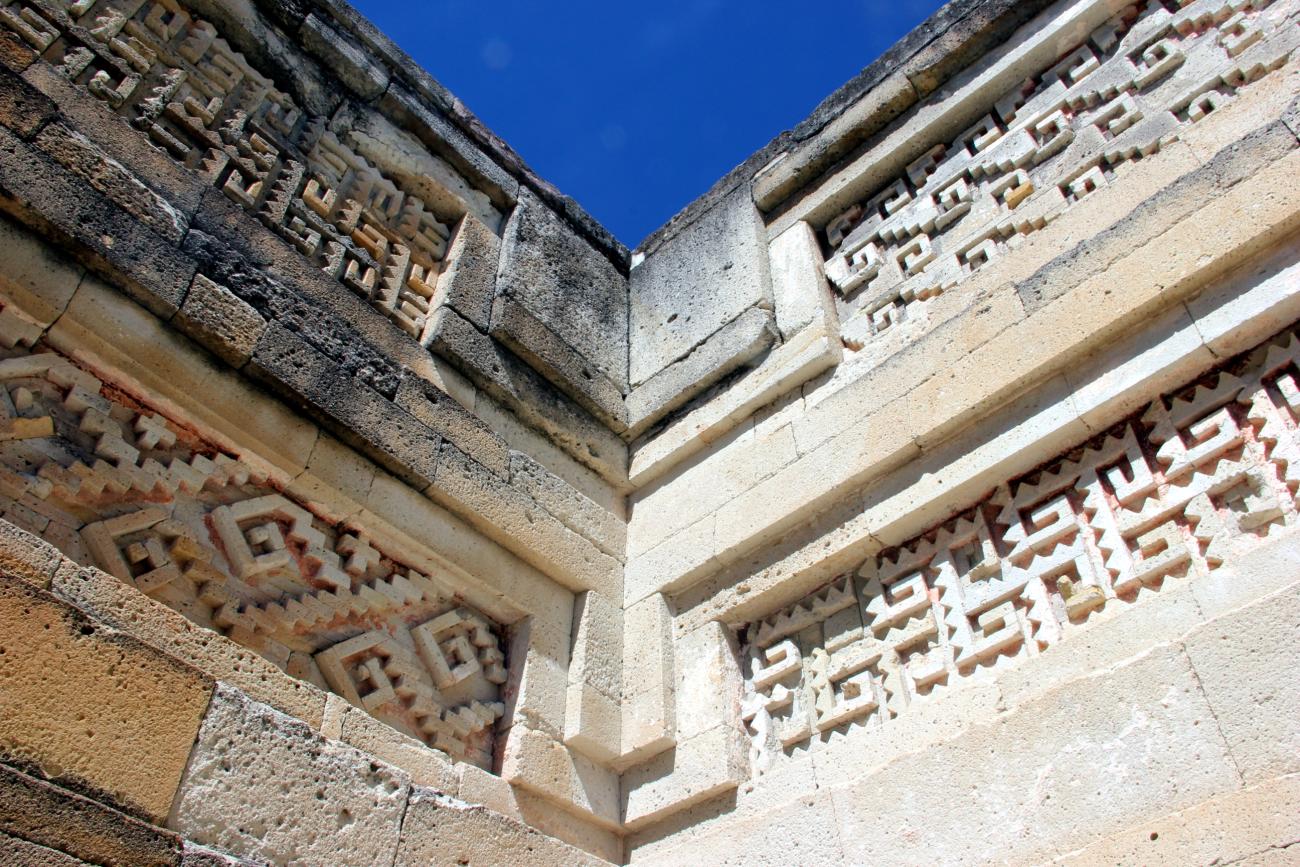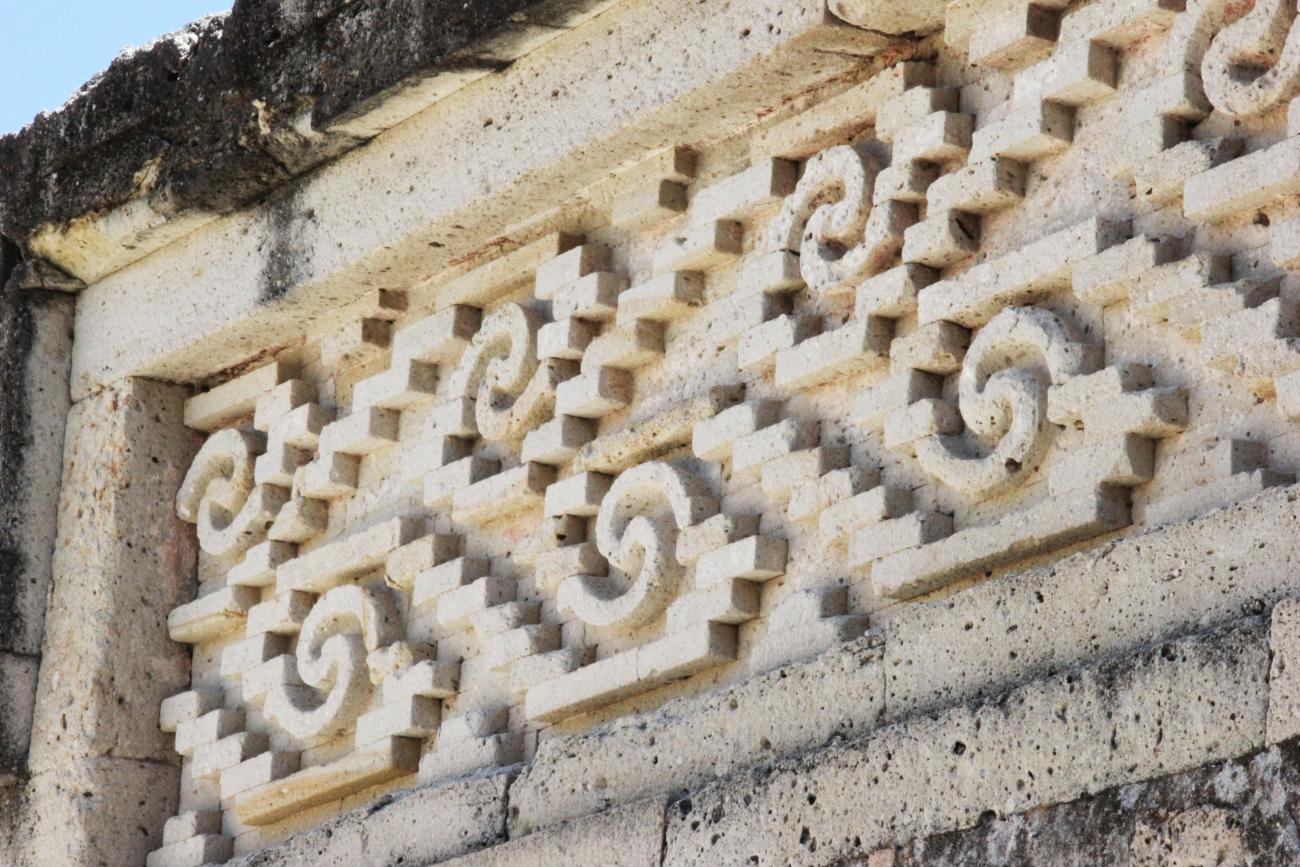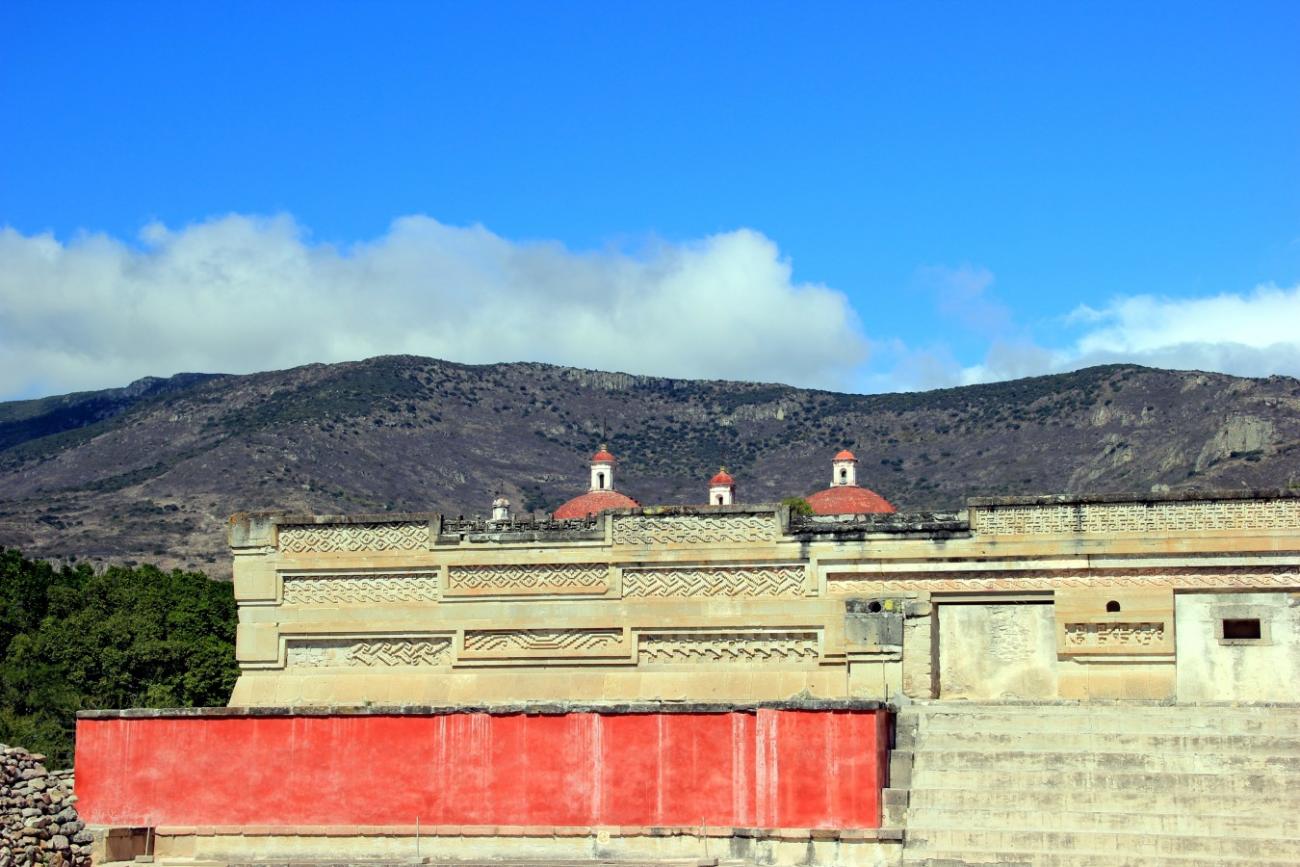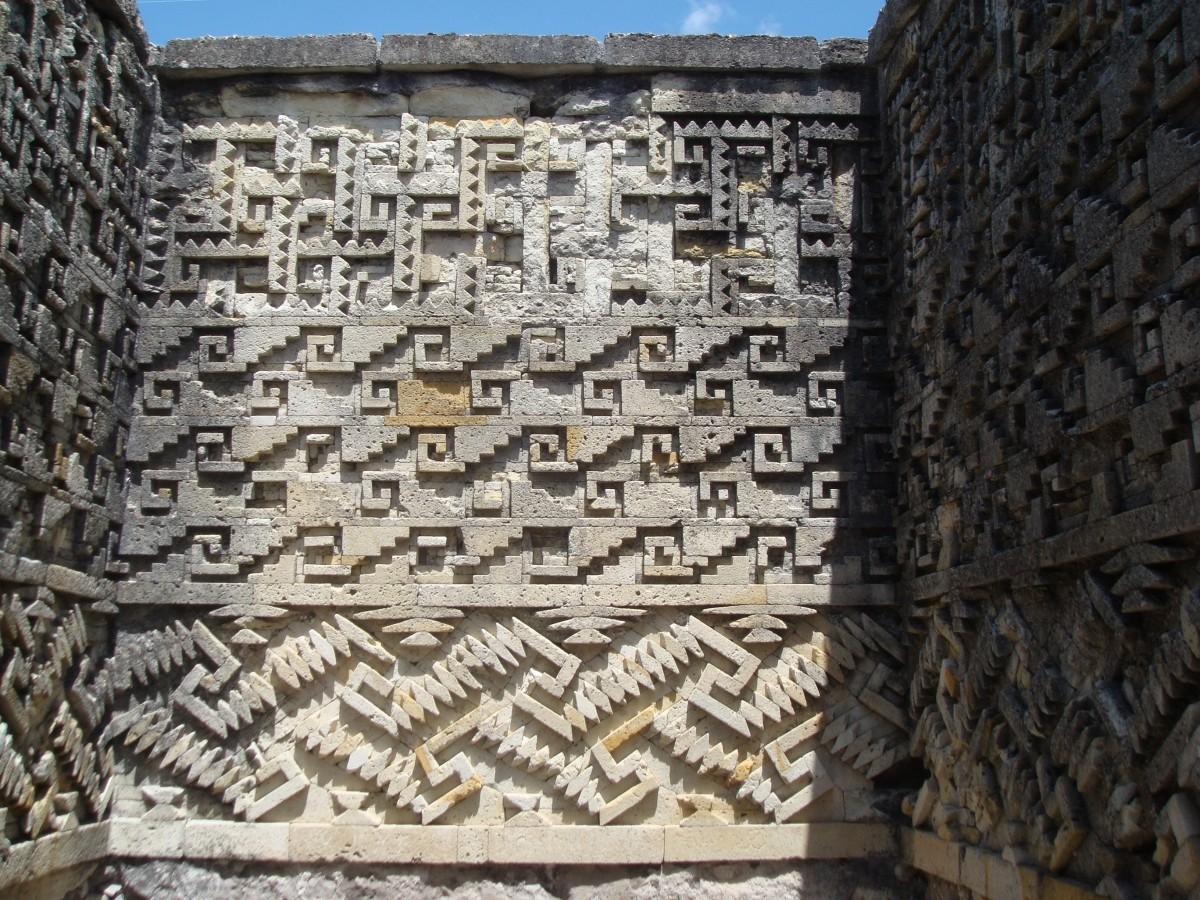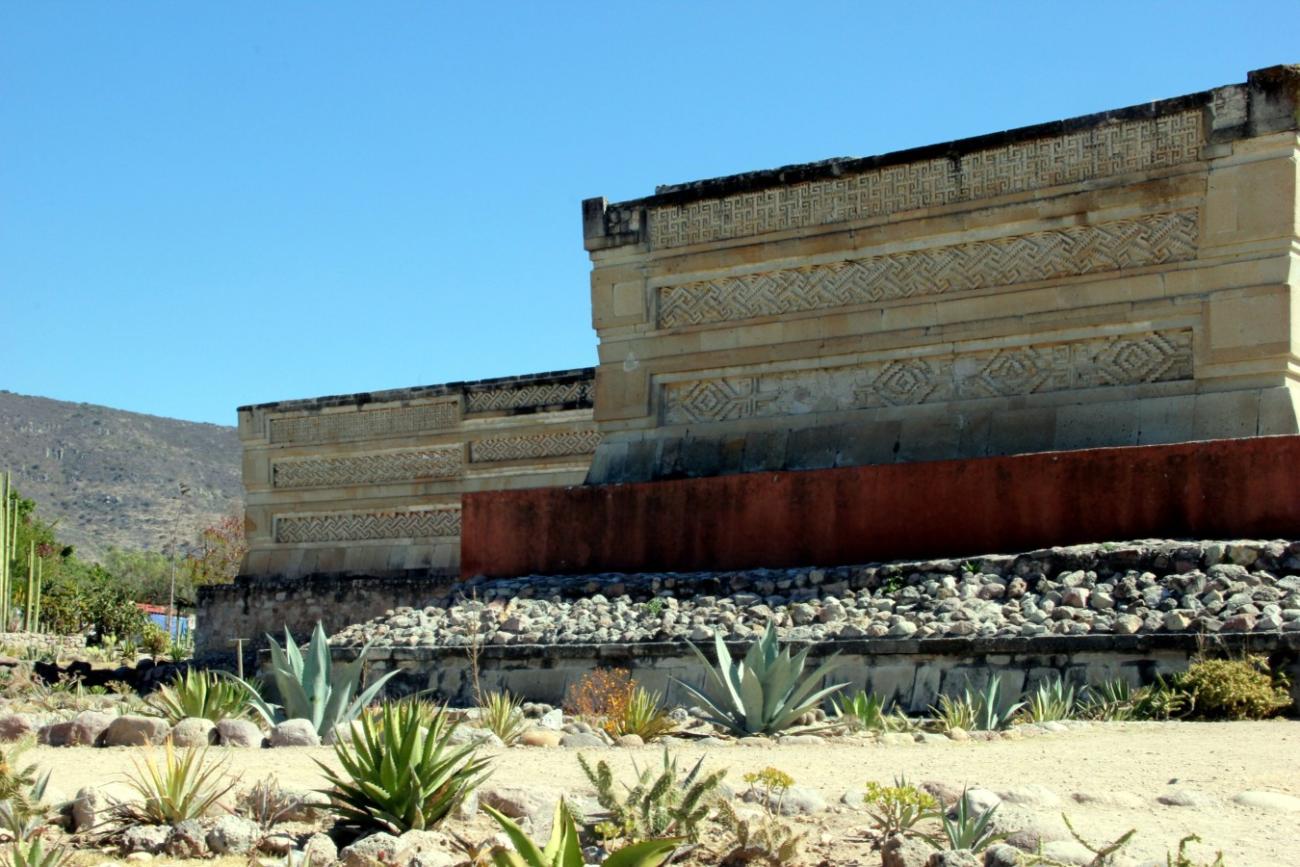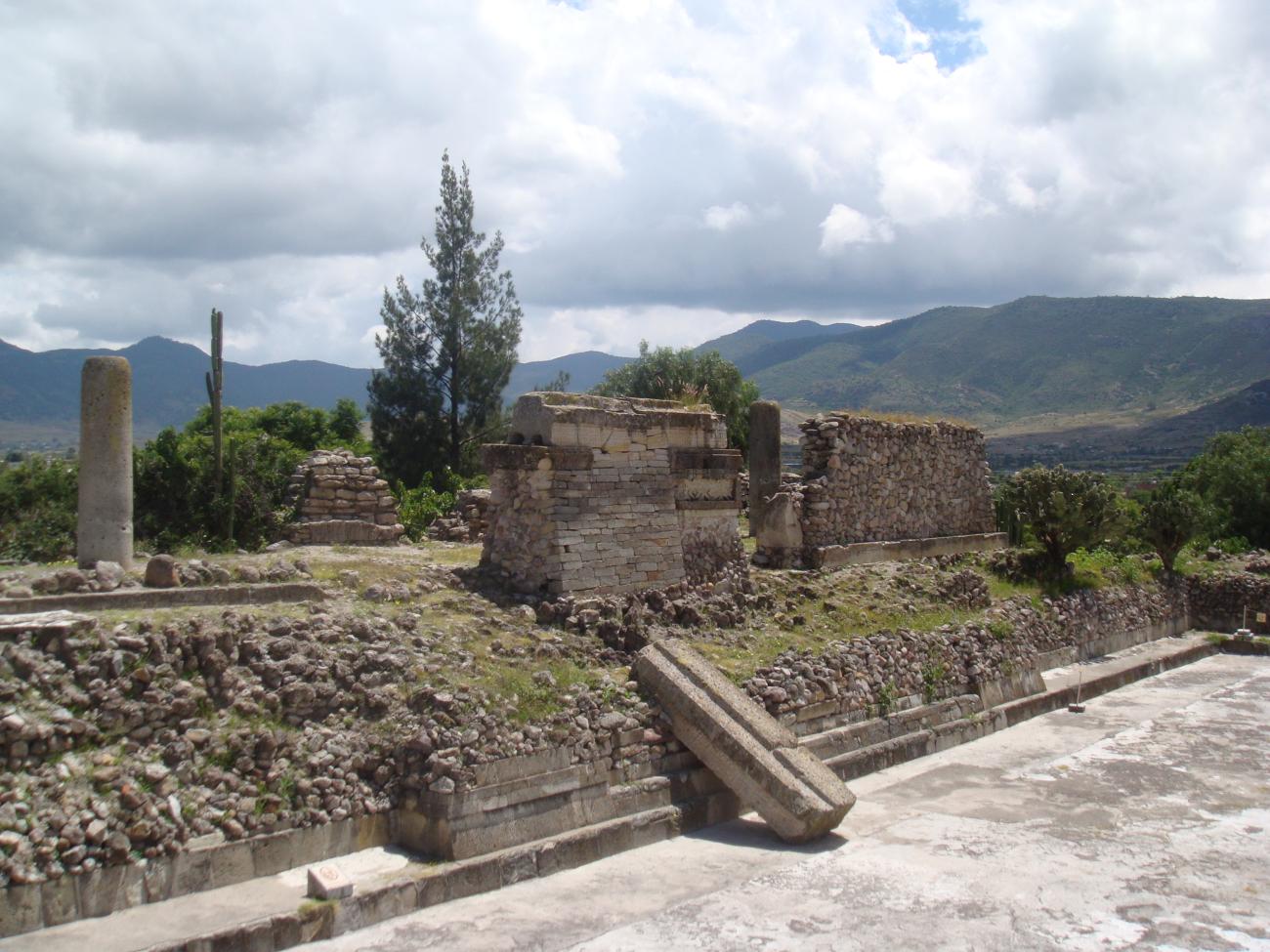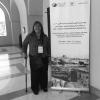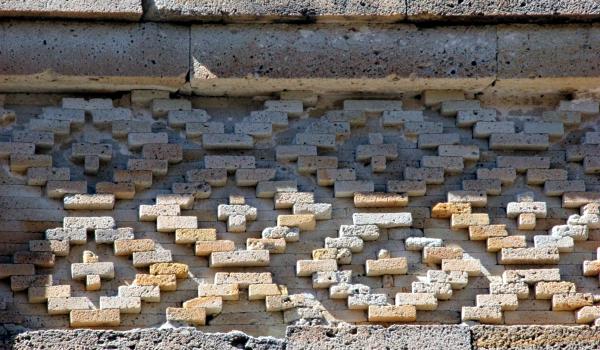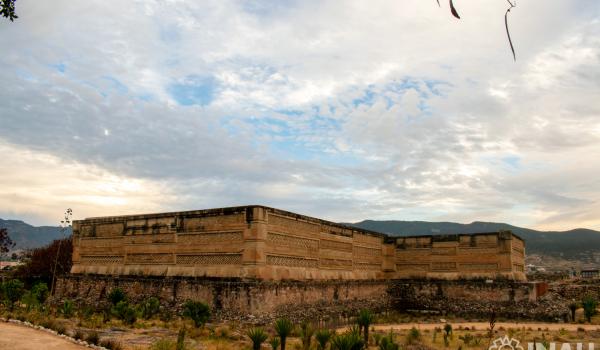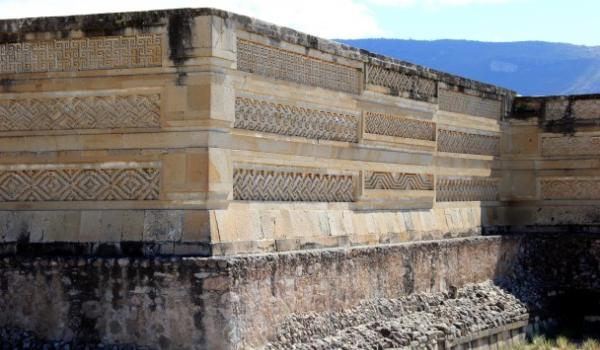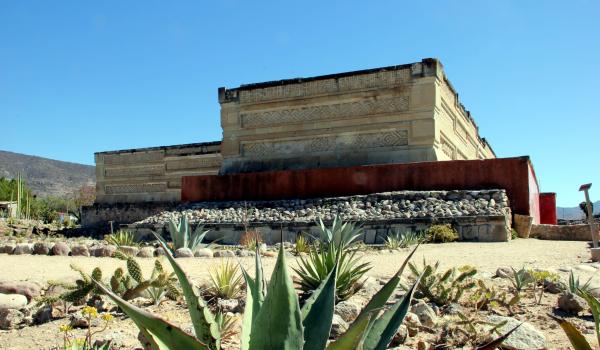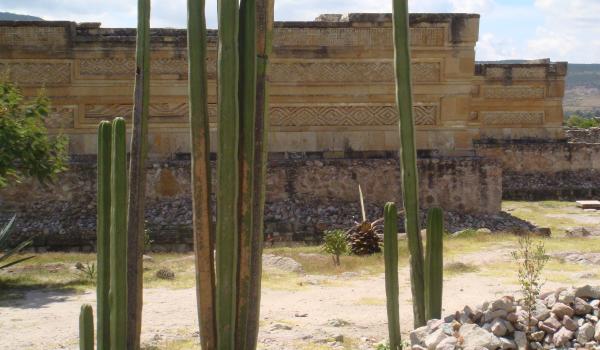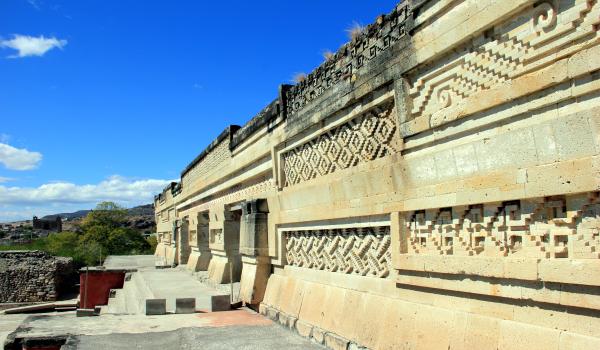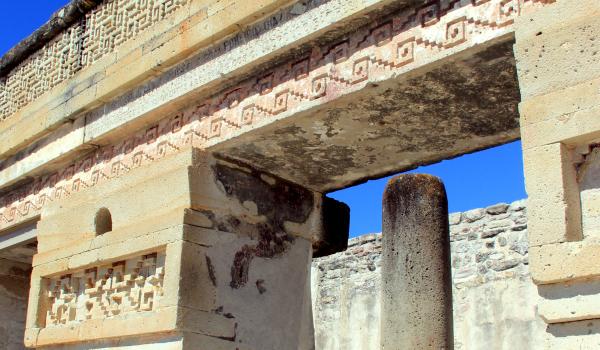We now call it Mitla from its Nahuatl name of Mictlán, but it was known in Zapotec as Lyobáa, “resting place” of the dead. It is estimated that Zapotec groups began settling the site in approximately 200 AD. It grew in importance after the fall of Monte Albán in the ninth century, reaching its height in approximately the year 1200, and maintaining supremacy in the Valley of Tlacolula until the Spanish conquest. Its population once stood at about 15,500. Mitla is currently a thriving, bustling city that contains and surrounds the archeological zone, where visitors can experience the everyday existence of a Zapotec community.
Five groupings of monumental architecture remain from ancient Mitla: the Northern Group, the Column Group, the Stream Group, the Adobe or Calvary Group and the Southern Group. The latter two date from an earlier age and are similar in style to Monte Albán (plazas bordered by palaces erected on platforms). The other three consist of three quadrangular courtyards interconnected with walkways. These are surrounded by large halls whose facades and internal walls present us with a profusion of complex geometrical mosaic decoration in finely carved stone. This is noteworthy due to its variety, which is characteristic of the late Zapotec style and cause for admiration from both locals and outsiders.
The Hall of Columns is the most outstanding of these buildings. Inside, there is a row of columns each carved from a single block of stone, fulfilling the architectural roles of support and decoration. In Courtyard E, several ancient palaces were destroyed and plundered for stones to build the church of San Pablo, which nevertheless remained supported and surrounded by extraordinary pre-Hispanic structures.
We can see the remains of paint, especially red paint, in several parts of the ancient city. Careful observation, and consultation of valuable testimony from national and international scholars (Eduard Seler, Edward Mühlenpfordt, Ignacio Marquina, Leopoldo Batres, Paul Gendrop, Alfonso Caso, Daniel Rubín de la Borbolla, John Paddock and Bernd Fahmel) have allowed us to rediscover the site’s abundance of mural painting, of which very fragmented yet revealing vestiges remain.







